Why log backup is needed
KubeSphere log system uses the log collection and storage scheme of Fluent Bit + ElasticSearch, realizes the life cycle management of Index through the cursor, and cleans the long-term logs regularly. For scenarios with log audit and disaster recovery requirements, the default 7-day log retention policy of KubeSphere is far from enough. Only backing up the ElasticSearch data disk does not guarantee data recoverability and integrity.
The elastic search open source community provides the SnapShot API to help us achieve long-term storage snapshot and recovery. This paper introduces how to transform the built-in elastic search component of KubeSphere (version 2.1.0) and practice log backup to meet the needs of audit and disaster recovery.
Note: for log export scenarios with small amount of data and query conditions, you can use the KubeSphere one click export function or try to use the elastic search dump tool. KubeSphere users of the external commercial version of ElasticSearch can also directly open the SnapShot Lifecycle Management function provided in the ElasticSearch X-Pack.
Prerequisite
Before executing the storage snapshot, we need to register the warehouse where the snapshot files are stored in the ElasticSearch cluster. Snapshot repositories can use shared file systems, such as NFS. Other storage types, such as AWS S3, need to be installed separately repository plug in Support.
Let's take NFS for example. The shared snapshot warehouse needs to be mounted to all the master nodes and data nodes of ElasticSearch, and the path.repo parameter should be configured in elasticsearch.yaml. NFS support ReadWriteMany access mode , so NFS is a good fit.
The first step is to prepare an NFS server, such as the QingCloud vNAS service used in this tutorial. The shared directory path is / MNT / shared dir.
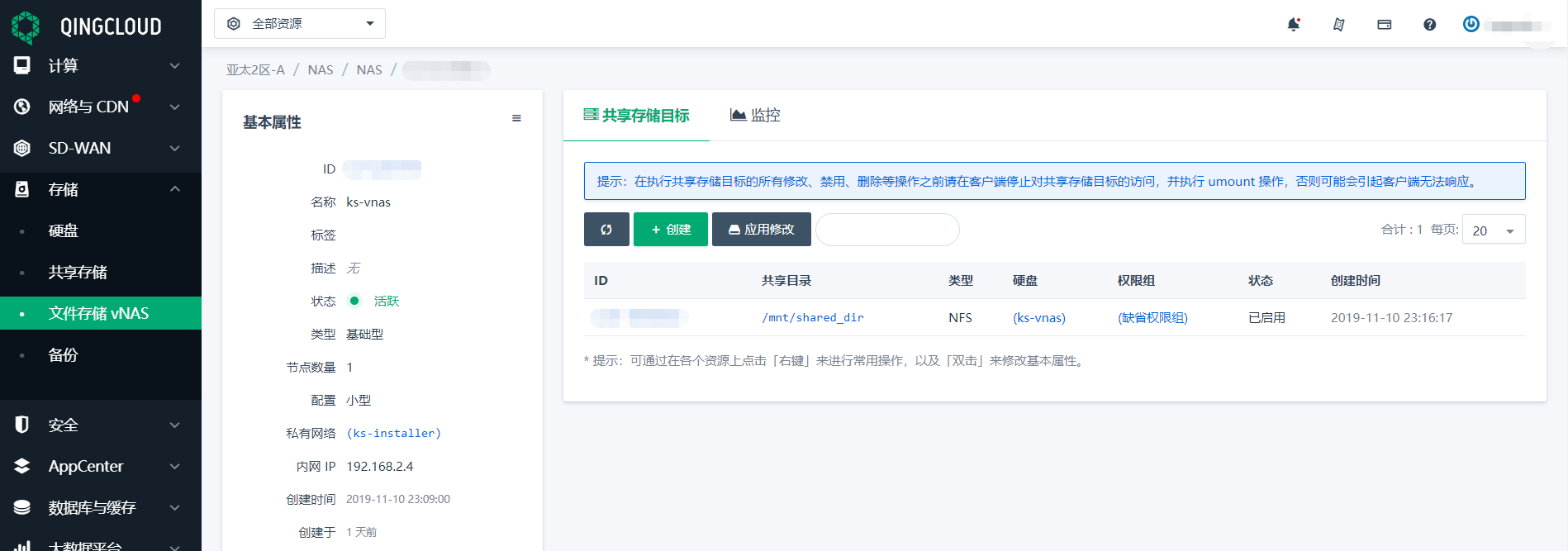
Then prepare StorageClass of NFS type on the KubeSphere environment, which we will use later when applying for Persistent Volume for snapshot warehouse. This article environment is already configured with NFS storage at installation time, so no additional operations are required. For readers with installation needs, please refer to Official documents of KubeSphere , modify conf/common.yaml and re execute the install.sh script.

1. ElasticSearch Setup
In KubeSphere, the primary node of ElasticSearch is the stateful replica set ElasticSearch logging discovery, and the data node is ElasticSearch logging data. This tutorial environment is one master and two slaves:
$ kubectl get sts -n kubesphere-logging-system NAME READY AGE elasticsearch-logging-data 2/2 18h elasticsearch-logging-discovery 1/1 18h
The first step is to prepare a persistent volume for the ElasticSearch cluster snapshot repository:
cat <<EOF | kubectl create -f - --- apiVersion: v1 kind: PersistentVolumeClaim metadata: name: elasticsearch-logging-backup namespace: kubesphere-logging-system spec: accessModes: - ReadWriteMany volumeMode: Filesystem resources: requests: storage: 100Gi # Populate the storageClassName field based on your environment storageClassName: nfs-client EOF
Second, modify the elasticsearch.yml configuration file to register the NFS directory path to each master-slave node. In KubeSphere, the elasticsearch.yml configuration can be found in configmap elasticsearch logging. On the last line, add path.repo: ["/usr/share/elasticsearch/backup"]
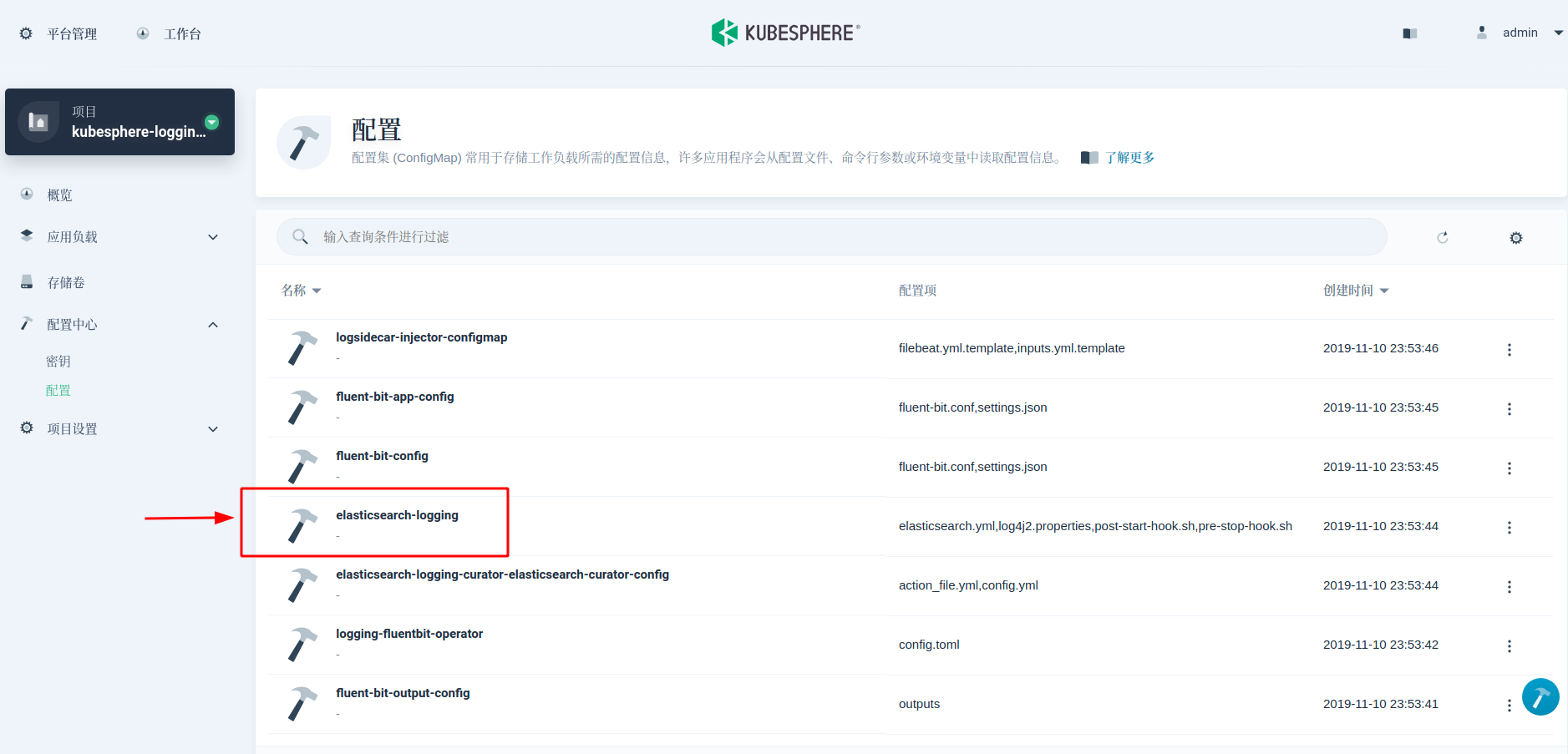
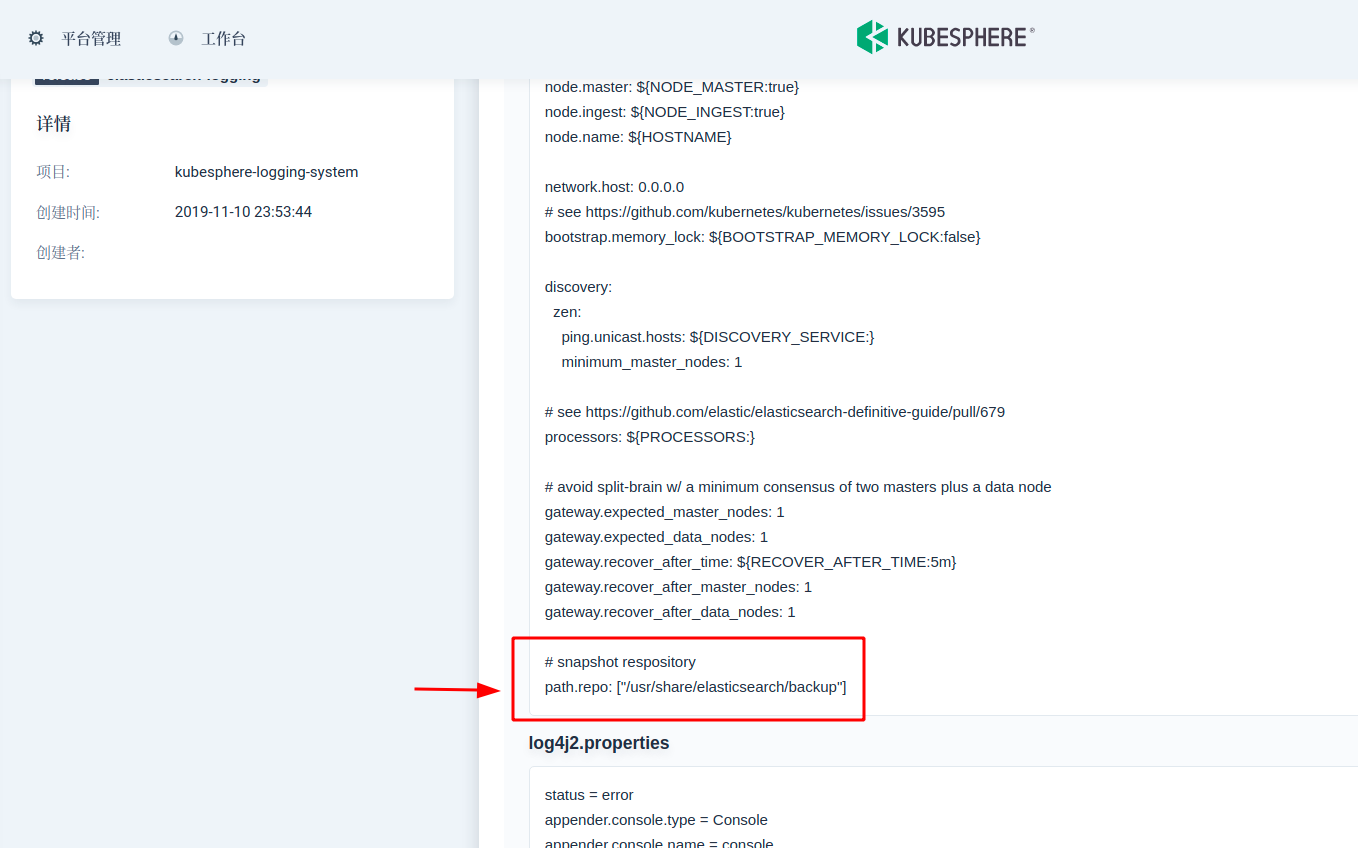
Step 3: modify StatefulSet YAML, mount the storage volume to each node of ElasticSearch, and use chown command in initContainer At startup, the owner user and user group of the initialized snapshot warehouse folder are elasticsearch.
In this step, we need to pay special attention to that we can't modify Stateful directly by kubectl edit. We need to backup the yaml content first, and then apply it again after modification.
kubectl get sts -n kubesphere-logging-system elasticsearch-logging-data -oyaml > elasticsearch-logging-data.yml kubectl get sts -n kubesphere-logging-system elasticsearch-logging-discovery -oyaml > elasticsearch-logging-discovery.yml
Modify the yaml file to modify the elasticsearch-logging-data.yml generated above as an example. The yaml file of the primary node is also modified.
apiVersion: apps/v1 kind: StatefulSet metadata: labels: # Omitted here due to space # ... name: elasticsearch-logging-data namespace: kubesphere-logging-system # ------------------------------------------------- # Comment or delete the meta information field of non labels, name, namespace # ------------------------------------------------- # resourceVersion: "109019" # selfLink: /apis/apps/v1/namespaces/kubesphere-logging-system/statefulsets/elasticsearch-logging-data # uid: 423adffe-271f-4657-9078-1a75c387eedc spec: # ... template: # ... spec: # ... containers: - name: elasticsearch # ... volumeMounts: - mountPath: /usr/share/elasticsearch/data name: data # -------------------------- # Add backup Volume mount # -------------------------- - mountPath: /usr/share/elasticsearch/backup name: backup - mountPath: /usr/share/elasticsearch/config/elasticsearch.yml name: config subPath: elasticsearch.yml # ... initContainers: - name: sysctl # ... - name: chown # -------------------------------------- # Modify command to adjust the owner of snapshot warehouse folder # -------------------------------------- command: - /bin/bash - -c - | set -e; set -x; chown elasticsearch:elasticsearch /usr/share/elasticsearch/data; for datadir in $(find /usr/share/elasticsearch/data -mindepth 1 -maxdepth 1 -not -name ".snapshot"); do chown -R elasticsearch:elasticsearch $datadir; done; chown elasticsearch:elasticsearch /usr/share/elasticsearch/logs; for logfile in $(find /usr/share/elasticsearch/logs -mindepth 1 -maxdepth 1 -not -name ".snapshot"); do chown -R elasticsearch:elasticsearch $logfile; done; chown elasticsearch:elasticsearch /usr/share/elasticsearch/backup; for backupdir in $(find /usr/share/elasticsearch/backup -mindepth 1 -maxdepth 1 -not -name ".snapshot"); do chown -R elasticsearch:elasticsearch $backupdir; done # ... volumeMounts: - mountPath: /usr/share/elasticsearch/data name: data # -------------------------- # Add backup Volume mount # -------------------------- - mountPath: /usr/share/elasticsearch/backup name: backup # ... tolerations: - key: CriticalAddonsOnly operator: Exists - effect: NoSchedule key: dedicated value: log volumes: - configMap: defaultMode: 420 name: elasticsearch-logging name: config # ----------------------- # Specify the PVC created in step 1 # ----------------------- - name: backup persistentVolumeClaim: claimName: elasticsearch-logging-backup volumeClaimTemplates: - metadata: name: data spec: accessModes: - ReadWriteOnce resources: requests: storage: 20Gi storageClassName: nfs-client volumeMode: Filesystem # -------------------------------------- # Comment or delete the status field # -------------------------------------- # status: # phase: Pending # status: # ...
After modification, you can delete the elasticsearch statefullset and reapply the new yaml:
kubectl delete sts -n kubesphere-logging-system elasticsearch-logging-data kubectl delete sts -n kubesphere-logging-system elasticsearch-logging-discovery kubectl apply -f elasticsearch-logging-data.yml kubectl apply -f elasticsearch-logging-discovery.yml
Finally, wait for all ElasticSearch nodes to start, call the Snapshot API to create a repository named KS log snapshots, and turn on the compression function:
curl -X PUT "elasticsearch-logging-data.kubesphere-logging-system.svc:9200/_snapshot/ks-log-snapshots?pretty" -H 'Content-Type: application/json' -d' { "type": "fs", "settings": { "location": "/usr/share/elasticsearch/backup", "compress": true } } '
Return 'acknowledged': true for success. At this point, the preparations for the ElasticSearch cluster snapshot function are ready. Later, you only need to call the Snapshot API regularly to realize incremental backup. ElasticSearch automated incremental backups can be done with the help of the cursor.

2. Use the timer to take a snapshot
ElasticSearch Curator Can help manage ElasticSearch indexes and snapshots. Next, we use the cursor to automate scheduled log backups. By default, the KubeSphere log component contains a cursor (deployed as a CronJob, executed at 1:00 a.m. every day) to manage the index. We can use the same cursor. The execution rules of the cursor can be found in ConfigMap.
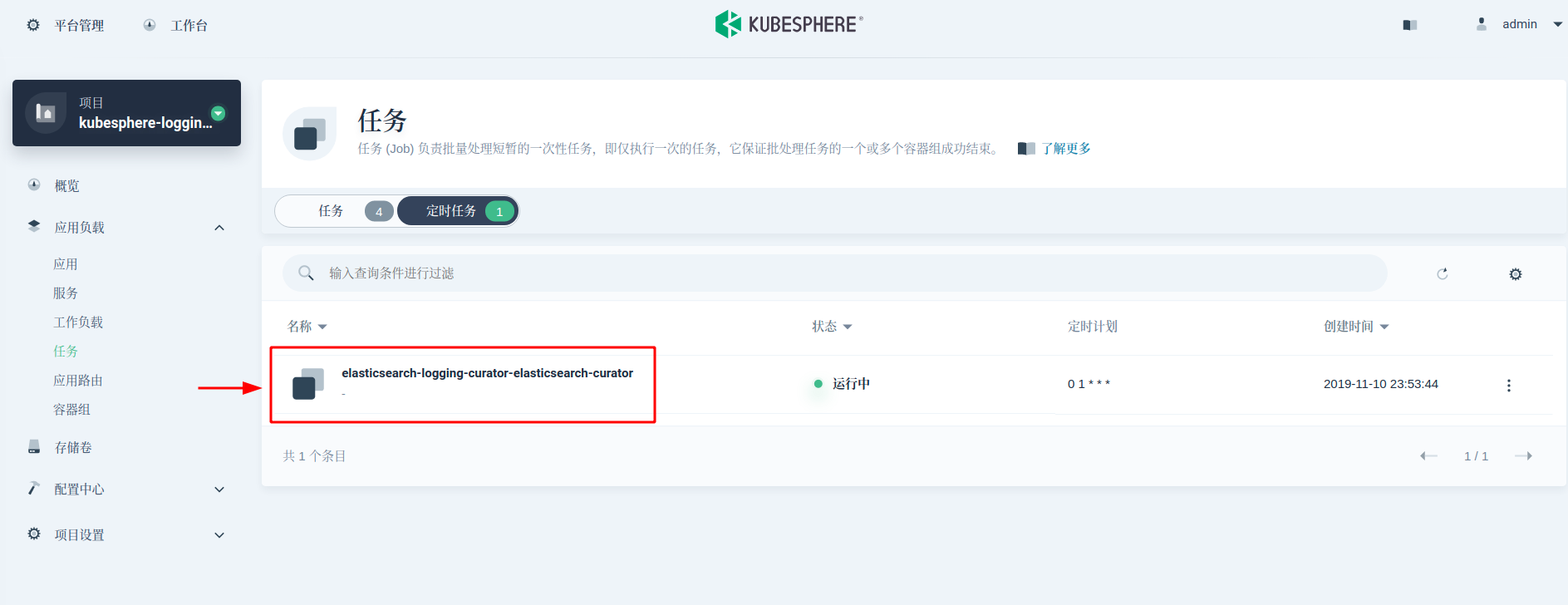
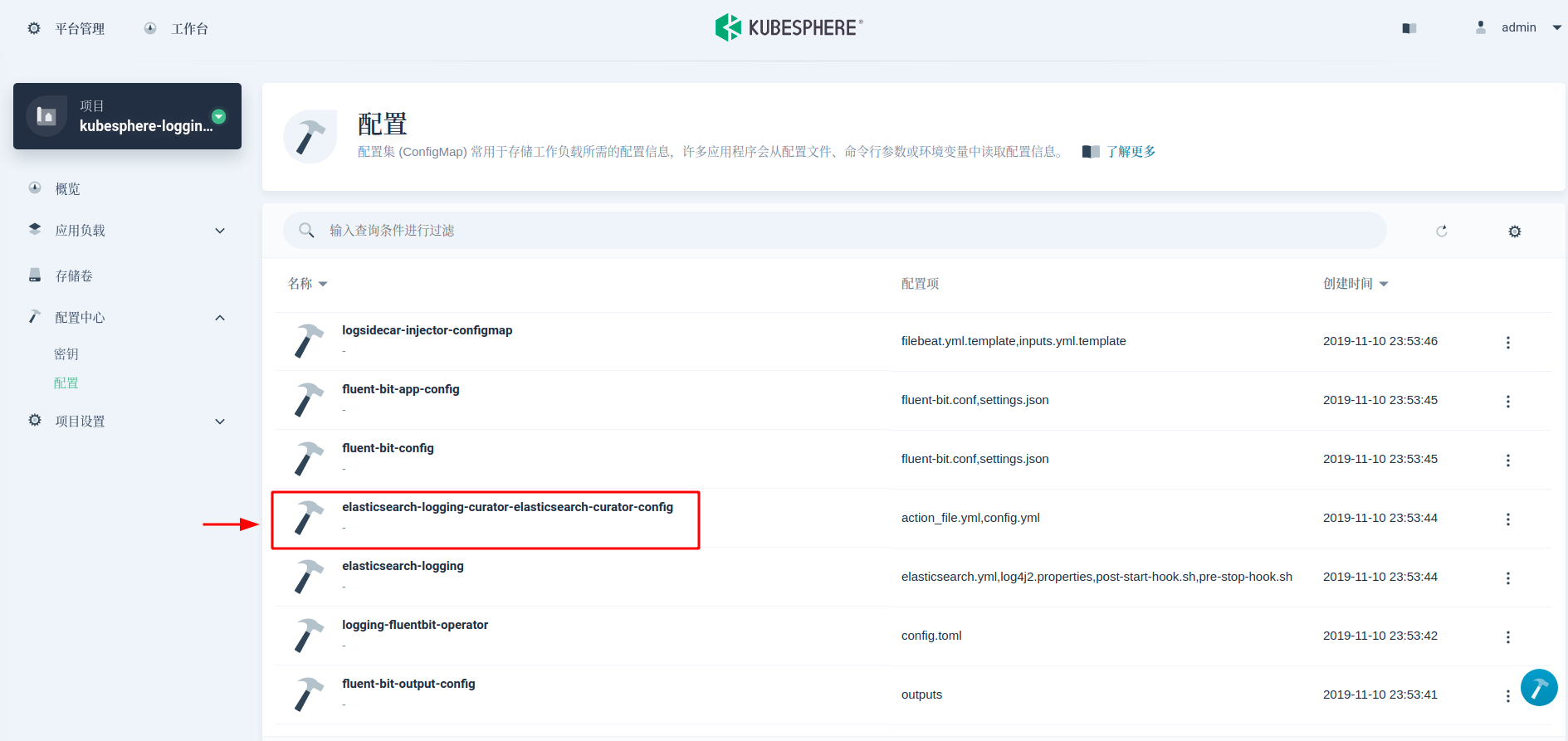
Here we need to add two actions to the action file.yml field values: snapshot and delete snapshot. And increase the priority of this rule to before delete "indexes". This configuration specifies that the snapshot creation and naming method is snapshot-%Y%m%d%H%M%S, and the snapshots are reserved for 45 days. Refer to the cursor reference for specific parameter meanings.
actions: 1: action: snapshot description: >- Snapshot ks-logstash-log prefixed indices with the default snapshot name pattern of 'snapshot-%Y%m%d%H%M%S'. options: repository: ks-log-snapshots name: 'snapshot-%Y%m%d%H%M%S' ignore_unavailable: False include_global_state: True partial: False wait_for_completion: True skip_repo_fs_check: False # If disable_action is set to True, Curator will ignore the current action disable_action: False filters: - filtertype: pattern kind: prefix # You may change the index pattern below to fit your case value: ks-logstash-log- 2: action: delete_snapshots description: >- Delete snapshots from the selected repository older than 45 days (based on creation_date), for 'snapshot' prefixed snapshots. options: repository: ks-log-snapshots ignore_empty_list: True # If disable_action is set to True, Curator will ignore the current action disable_action: False filters: - filtertype: pattern kind: prefix value: snapshot- exclude: - filtertype: age source: name direction: older timestring: '%Y%m%d%H%M%S' unit: days unit_count: 45 3: action: delete_indices # Original content unchanged # ...
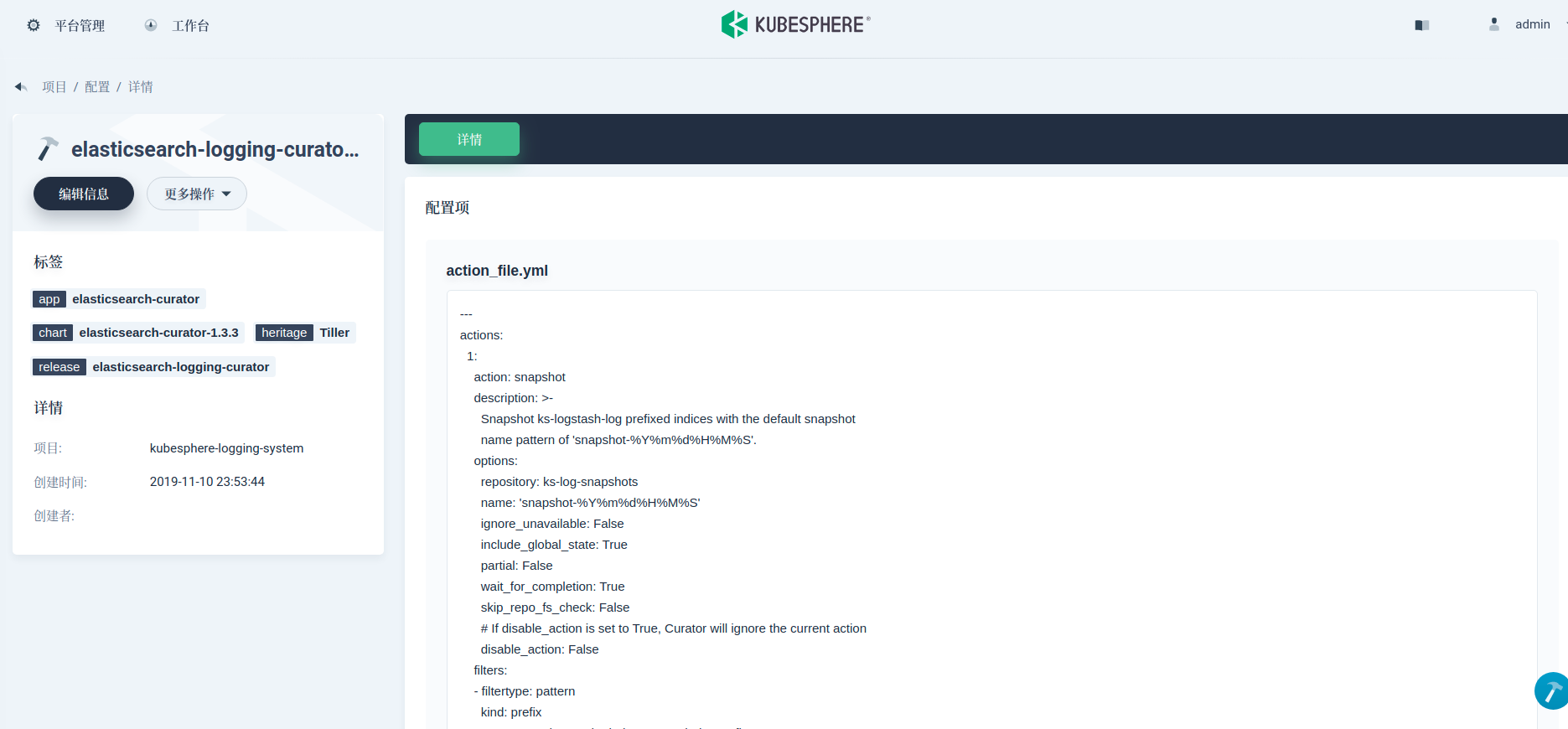
3. Log recovery and view
When we need to review the logs a few days ago, we can restore them through snapshots, such as the logs on November 12. First we need to check the latest Snapshot:
curl -X GET "elasticsearch-logging-data.kubesphere-logging-system.svc:9200/_snapshot/ks-log-snapshots/_all?pretty"
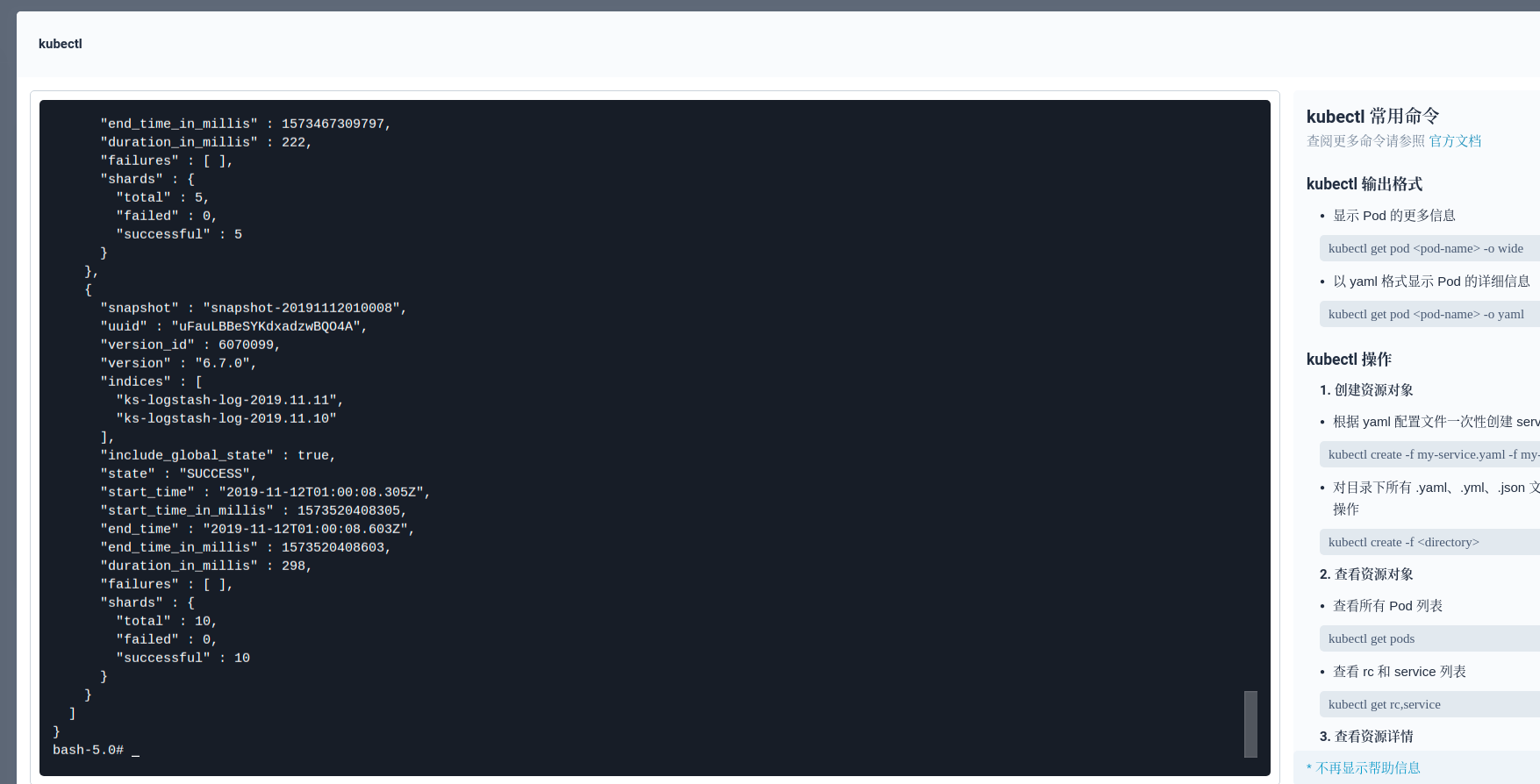
Then restore the index on the specified date through the latest Snapshot (or all). This API will recover the log index to the data disk, so please ensure that the storage space of the data disk is sufficient. In addition, you can directly back up the corresponding PV (the storage volume corresponding to the Snapshot warehouse can be directly used for backup), mount to other ElasticSearch clusters, and restore the logs to other ElasticSearch clusters for use.
curl -X POST "elasticsearch-logging-data.kubesphere-logging-system.svc:9200/_snapshot/ks-log-snapshots/snapshot-20191112010008/_restore?pretty" -H 'Content-Type: application/json' -d' { "indices": "ks-logstash-log-2019.11.12", "ignore_unavailable": true, "include_global_state": true, } '
Depending on the size of the log volume, the waiting time varies from a few minutes. We can view the logs through the KubeSphere log Dashboard.
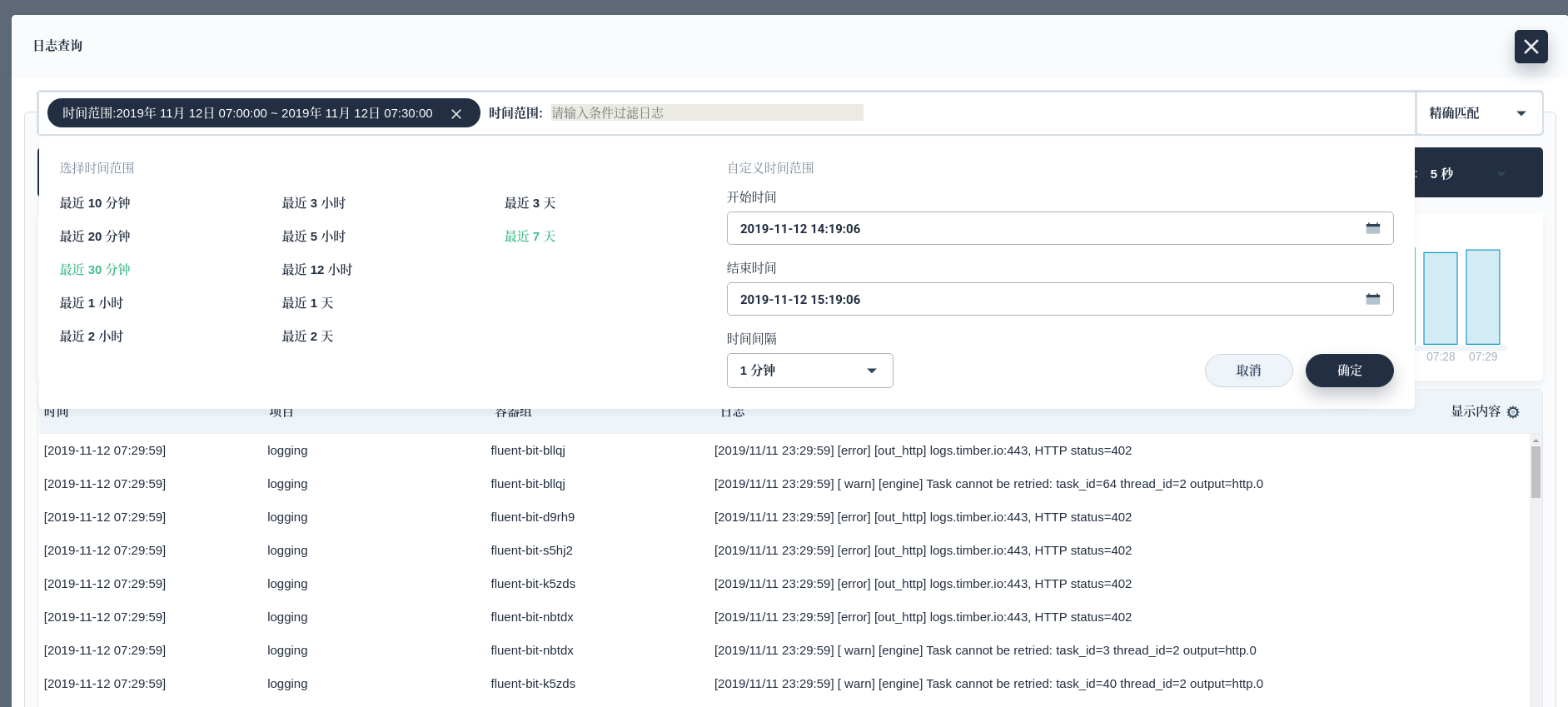

Reference document
ElasticSearch Reference: Snapshot And Restore
Meetup notice
 KubeSphere (https://github.com/kubesphere/kubesphere )It is an open-source application-oriented container management platform, which supports deployment on any infrastructure and provides a simple and easy-to-use UI, greatly reducing the complexity of daily development, testing and operation and maintenance. It aims to solve the storage, network, security and ease of use pain points of Kubernetes itself, and help enterprises easily cope with agile development, automatic monitoring, operation and maintenance, end-to-end End application delivery, micro service governance, multi tenant management, multi cluster management, service and network management, image warehouse, AI platform, edge computing and other business scenarios.
KubeSphere (https://github.com/kubesphere/kubesphere )It is an open-source application-oriented container management platform, which supports deployment on any infrastructure and provides a simple and easy-to-use UI, greatly reducing the complexity of daily development, testing and operation and maintenance. It aims to solve the storage, network, security and ease of use pain points of Kubernetes itself, and help enterprises easily cope with agile development, automatic monitoring, operation and maintenance, end-to-end End application delivery, micro service governance, multi tenant management, multi cluster management, service and network management, image warehouse, AI platform, edge computing and other business scenarios.